In our next installment of Surf Cinema Sundays powered by TheSurfNetwork, we’ll be showing “Singlefin: Yellow,” included in your Surfline Premium membership on August 16th. We’ll continue showing iconic surf movies every other Sunday. (Next up: “Musica Surfica,” August 30th.) If you’re not already Premium, sign up for a Surfline free trial here, and you can also stream/rent the film by going to TheSurfNetwork’s site.
***
Surfers love shiny new things as much as anyone, and we’ll always covet the ritual of waxing up a fresh, new stick with an indeterminable shelf life but infinite potential. But I’d wager that there are enough surfboards in this world, right now, to accommodate every person who’d ever want to ride one. Perhaps more important than the actual riding of them, though, is the social commerce that comes with their creation, acquisition and perpetuation. The path of the surfboard — from a crude block of foam to the hands of a man in a ventilator mask to a customer’s car to a surf shop rack to some collector’s garage — is as linear and pure as the essence of surfing itself. At least it could be.
You know how we know that Singlefin: Yellow is a bona fide classic? Because it could’ve been made in 2000 or 2020 and the message is still timelessly relevant. California filmmaker Jason Baffa finished his maiden release in 2003 — an era defined by a booming industry enveloping a confused culture. Tracking the moods and movements of one 9’0” single-fin pintail through the experiences and perspectives of six surfers — Beau Young, David Kinoshita, Devon Howard, Daize Shayne, Bonga Perkins and finally, its original creator, El Segundo shaper Tyler Hatzikian — “Yellow” was born to be ridden, shared and passed along. From California to Australia to Japan to California to Mexico to Hawaii and back to California, the vehicle dazzles its passengers in everything from mediocre beachbreak to pumping point surf to the world’s most treacherous reefbreak through 72 easily digestible minutes, since Singlefin: Yellow also functions as a series of short films.
“There’s the film you make, and then there’s the film it becomes once the audience makes it their own,” Baffa told Surfline. “Singlefin: Yellow is certainly an example of that. Hard to believe we made this almost 20 years ago, so thanks to all who embraced it. And thanks to everyone who’s supported my films, each one is a new journey. I’m prepping my first scripted narrative, and it’s just as exciting as loading up for that first SFY trip to Byron Bay. I love telling stories, so I really appreciate that the audience has an open ear for them.”
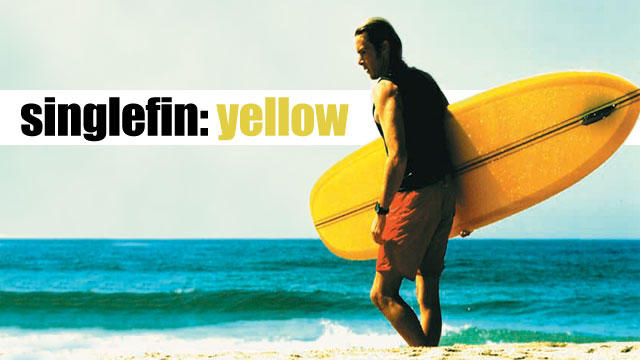
Surfline kept Baffa on the line to learn more.
Surfline: You really came out of the gates swinging for your first movie. What sparked the idea?
Jason Baffa: I wanted to be a filmmaker long before I wanted to be a surfer. I loved the ocean as a kid and spent hours bodysurfing, but my surfing obsession came later, while my filmmaking obsession began when I was about five. So, wanting to make a surf movie was really the manifestation of a bigger life ambition to make a feature film. Somebody once said, “do what you know.” And since I loved riding heavy longboards, the project just felt right. I also saw a real opportunity, because in 2000 there wasn’t a ton of focus on the history and tradition of surfing. Then there was the timing, post-9-11. I’d been working long hours grinding on a TV show and looked in the mirror, like, “What are you doing with your life? What have you always wanted to do?” The answer was simple: make movies. I thought, “Okay, I’m gonna make a real movie that surfers will love, but can also play at film festivals, shot on film with a story and emotion. It will be the modern Endless Summer. Spielberg will call about a sequel!” [laughs] Yeah, ignorance is bliss.
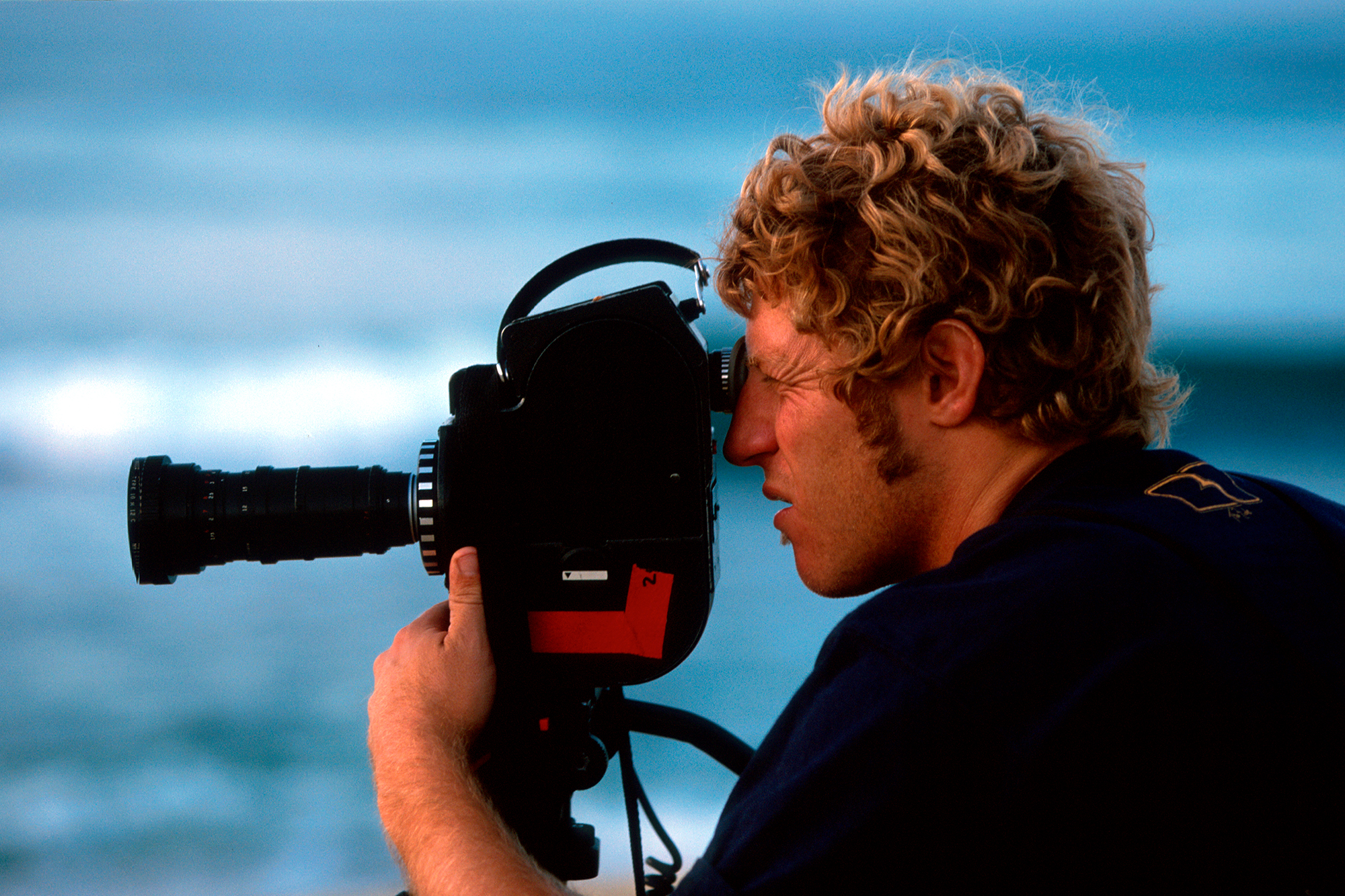
Singlefin Yellow
We know you were heavily influenced by filmmakers like Brown, MacGillivary-Freeman and Malloy, but in the early 2000’s, all-killer-no-filler, shortboard surf porn still ruled the landscape. What compelled you to eschew all that and instead adapt an “omnibus story structure” with the surfboard itself being the central character?
I’d roughed out a few omnibus outlines for movies that followed one object, like a bag of money. As a storyteller, that structure’s always interested me, and I also have an odd obsession with inanimate objects. One of my college films was about a playful scooter stalked by a menacing death truck. It’s so fun to bring life to those objects and see them become characters that people cheer for. And my senior thesis was a short-film adaptation of a Chris Ahrens story, “The Effortless Prune,” about a childhood obsession with a surfboard. So, I think all these things played into it. But your references are spot on. Those were the only surf films I watched, plus John Milius’ Big Wednesday and JBrother’s Adrift. Put it all in a blender and there it is.
How did you assemble the cast and choose the locations? Was it based on your own vision, Tyler Hatzikian’s input, a combination of both or happenstance?
Oh, I had to beg Zeke to make the movie with me [laughs]. I think he thought I was crazy, so convincing him was first. On paper, the locations were defined by a hope to represent different parts of longboard culture. I didn’t have enough money to go everywhere and show everyone, so I looked at key places like California, Hawaii, Australia and Japan. The business side of that made sense, as well: showcase a local from each region, and hopefully the surfing communities from those regions will embrace the film. I also gotta thank producers CJ Olivares, Chris Merrit and Mark Jeremias for sending me to shoot surf contests for Fox Sports Bluetorch TV. From the pool at the Rabbit Kekai Classic in Costa Rica to the beach bar at a longboard tuberiding event in Puerto Escondido, they gave me a unique opportunity to get to know these amazing people, and we all became friends. As the film developed, I gave them a say.
It was all pretty natural. Tyler was blown away watching Beau Young surf Puerto, and he looked up to Nat for his contribution to surfing, so that made for an easy and honest handoff. Beau had done a lot of traveling with David Kinoshita and wanted to send it to him. Daize was a world champion and friends with the group, including Bonga, who’s a modern-day Duke. Devon Howard worked at Longboard Magazine, and he was a tremendous help, connecting the dots to make it all work. He’s been a phenomenal ally and friend, and he rips.
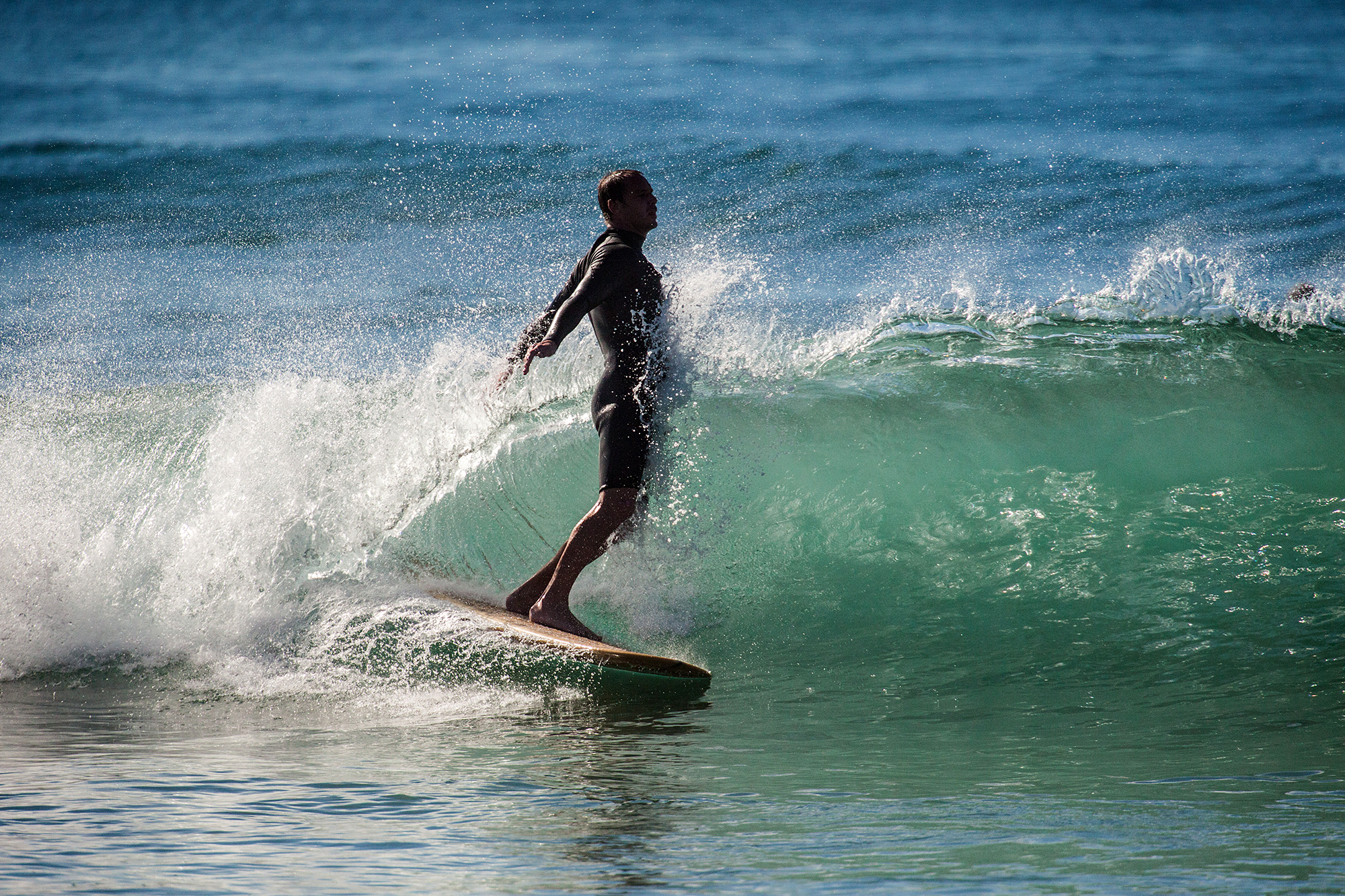
Tyler Hazikstan.
Is it true you hit up family and friends and maxed out a credit card to finance the project?
True. I’d been in a car accident and got like $20,000 in insurance (and a busted lower back), so I rolled that into buying the film, the gear and the first plane tickets. That got me started but I needed more, film processing and telecine was expensive. So, the VISA. I’d write myself those credit card checks, which was dumb. I really don’t recommend that approach, but it kept me going. You gotta remember I wasn’t getting paid to make this thing, so bills, health insurance, rent, car payments — all that shit adds up over time. I hit a wall, like, “Geez, I’m outta money! How do I finish this thing?” Luckily, I had enough footage to cut a trailer.
That Carl Cramer cut is the same trailer that’s online today, some 20 years later. It still gives me goosebumps. And I gotta say, not too many surf movies in 2002-03 had film trailers, but I knew that a good one would help me sell the project to investors. My sister, a Stanford grad with an MBA from UCLA, helped me draft out a business plan, so I took that and the trailer and sent it out to friends, including Mark Jeremias, who was a very early supporter. Back in the days of DVD, Mark and his brother Stefan were looking to distribute surf films under Build Worldwide and Sea Crown Ventures, so they helped refine my business plan with an actual DVD release strategy. The rest came from family and friends who wanted to help. I basically sold off some of my ownership to them, paid down the debt and finished the film. But the hardest thing was actually moving back in with my parents to save money. I remember Mark saying, “Every month of rent at the beach is a plane ticket,” so I moved inland. Painful, but I was all in.
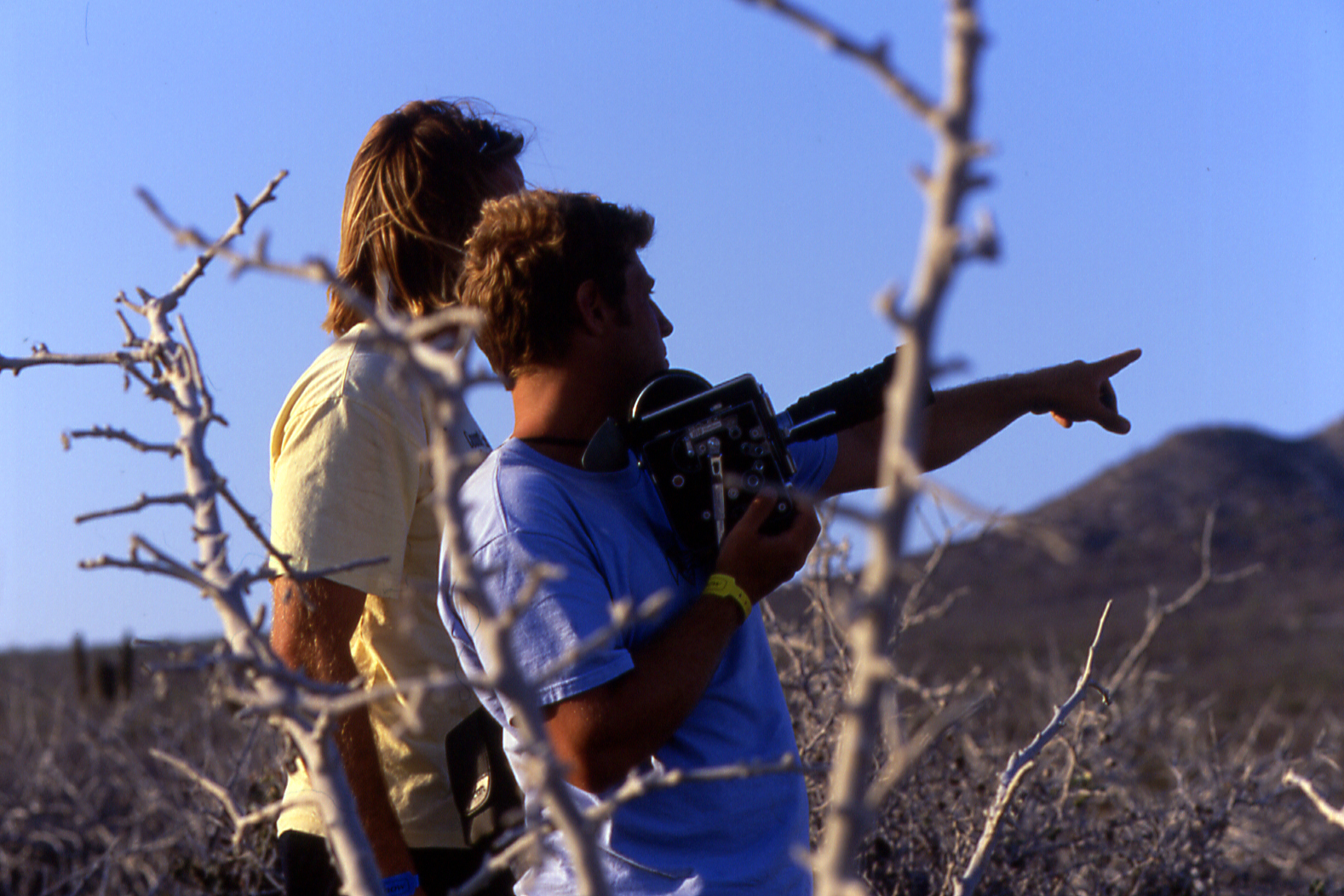
Devon Howard and Jason Baffa.
What other challenges revealed themselves throughout production?
One incident stands out — a debatable debacle that doesn’t get spoken of often. Bonga and I had spent the day on the South Shore — ten hours shooting a pumping Southern Hemi in the tropical sun. We loaded up his pick-up in the dark to grab dinner near Ala Moana shopping center, and when we got back to his house I realized that my backpack was gone, along with my entire Bolex kit and all the film from that day. Stolen? Lost? I honestly don’t know. I left thinking I’d never see it again, and Bonga said, “I’ll put it out on the coconut telegraph, it’s a small island.” One week later, at home in California I received a call from Honolulu PD saying that someone who requested to remain anonymous returned my backpack, still full of film gear, film rolls and my business card. Nothing was missing, and they shipped it back to me! A big mahalo to Bonga and whoever else may’ve helped. That was pretty special. And a lot of that footage ended up in the film.
Speaking of which, if any photographers out there were shooting Hawaii in 2003-04 and have 35mm frames of Bonga’s session on Yellow, please send me a shot [laughs]… Seriously, it must exist somewhere.
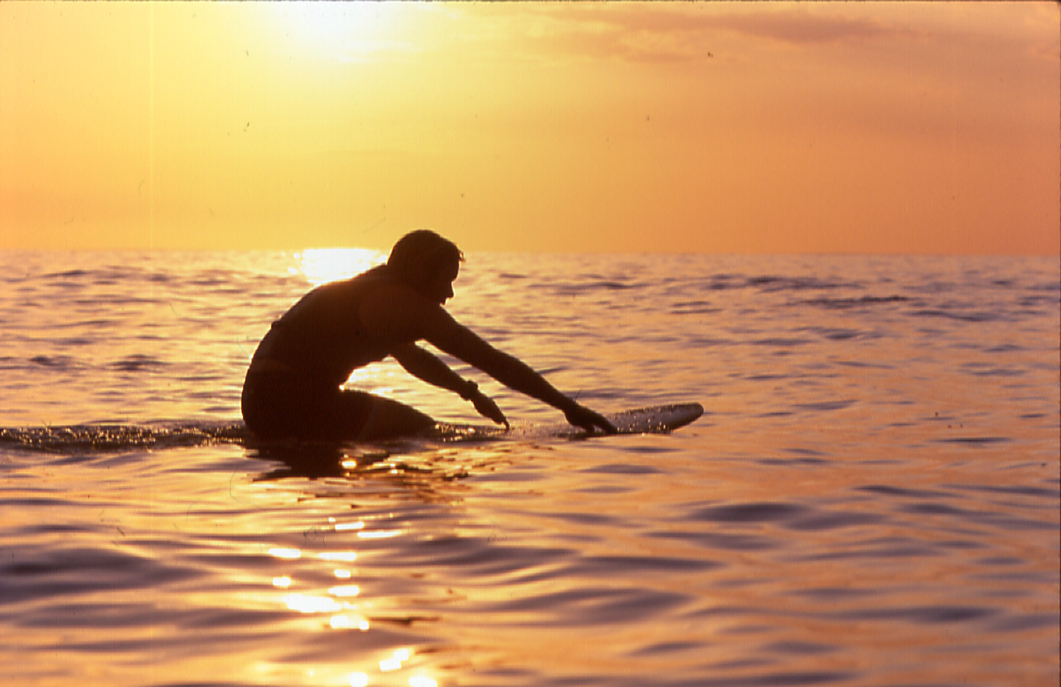
Devon Howard.
Shot on 16mm film, the cinematography is arguably the main draw of Singlefin: Yellow. What exactly did Scott Kassenoff and Mike Prickett bring to the table?
I love both those guys. Scotty’s an old friend, and one year into making the film I ran into him at In-N-Out Burger. He offered to swim, and I said, “That would be amazing because I don’t have any water footage!” He added so much with his water shots, plus he’s a seasoned filmmaker who’s worked on hundreds and hundreds of commercials. It’s great having someone like that on your side. And Prickett, he honestly saved the movie. He shot a bit of water when I was in Hawaii, ‘cause Scott couldn’t make that trip, but the heroic effort came when Pipeline picked up in April and I didn’t have a camera. He said, “Yeah, brah, come grab my ARRI SR2.” I ran over, grabbed three huge cases, and Bonga and I took it all straight to Pipe. If not for Mike Prickett, Bonga’s entire Pipe session might have gone undocumented.
While the plot is fairly simple, the film meanders toward several themes, delivered through the unique personal experience of each of the characters: minimalism; anti-consumerism; escapism; aloha; freedom; open-mindedness… What is the one thing you’d like people to take away from Singlefin: Yellow?
Geez, you’re like the Elvis Mitchell of surf movies! I’m suddenly in filmmaker therapy [laughs]. I love it! I think the beauty of collaborating with interesting people and developing their personalities into the film really helped shape those themes. My mantra throughout production was to show younger audiences that, through our love of riding waves, we are all connected. We are one. No matter what you choose to ride or where you’re from or what you look like or what you believe in — our connected passion for the ocean envelopes us into a bigger tribe, and we should acknowledge and respect that. Know your history and respect it. Especially the craftsmen who pour the experience and knowledge that was passed down to them into the vehicles we ride. Does a surfboard have a soul? I certainly believe it does.
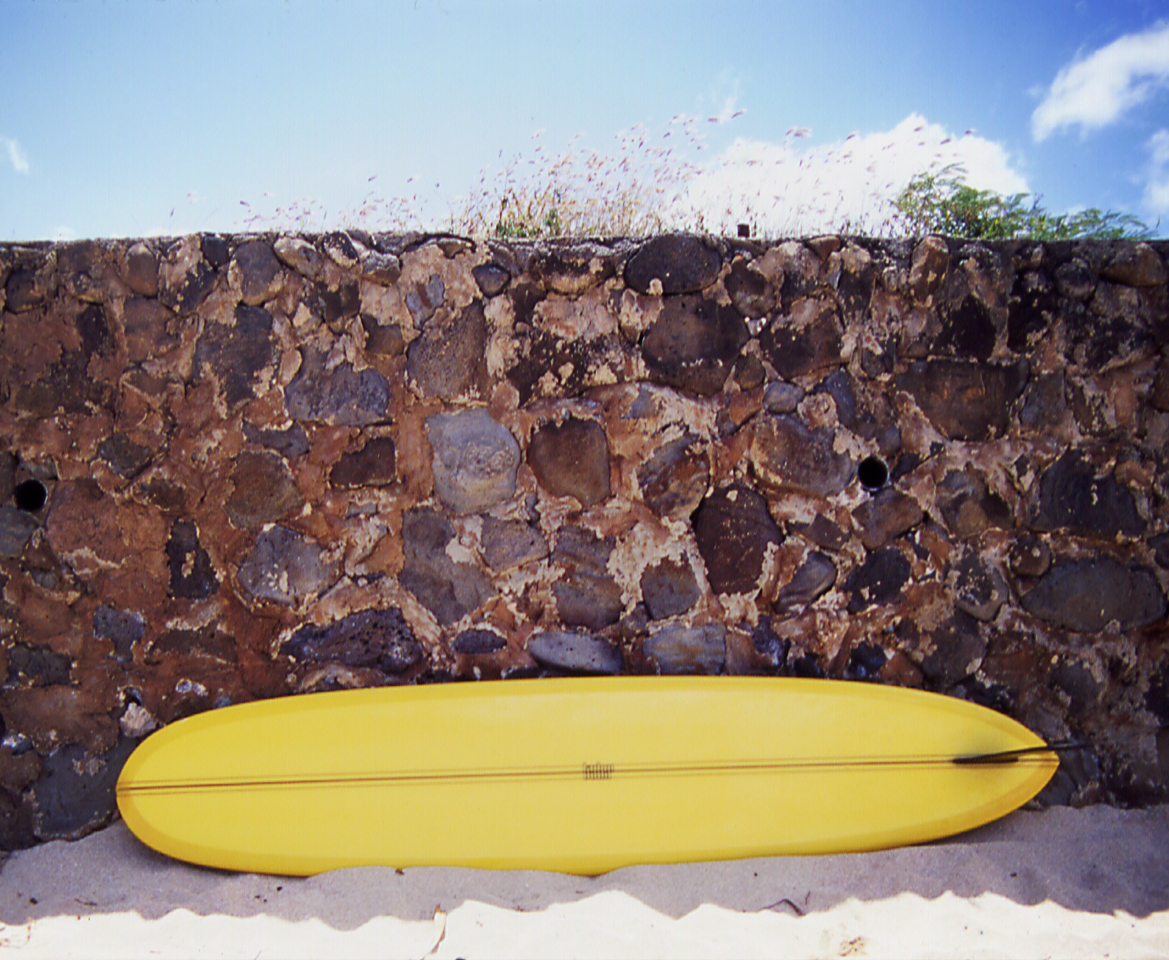
Singlefin Yellow
Were there any elements from this experience that you maintained throughout your filmmaking career, and perhaps were able to apply to your own production company, Jason Baffa Films? In other words, what kind of professional template did Singlefin: Yellow lay for you?
It defined my approach to making independent films. We used that same business plan on all our surf films (SFY, One California Day, Bella Vita), and a few of the investors have been with me for every film. That’s pretty amazing, so a big thanks to my sister for crafting a solid business plan. Some advice for young filmmakers, though: Looking back, I wish I’d built a small studio to produce all the films, where investors invest in the studio. But indie films generally raise equity project by project, so that’s what we did. I also kept using that same Bolex film camera and established some wonderful collaborations. My longtime friend and film editor, Carl Cramer, has cut on all my films, including our recent documentary about golf caddies, Loopers: The Caddie’s Long Walk. Scott Kassenoff was a huge part of photographing One California Day and served as Director of Photography on Bella Vita. Those relationships have really contributed to my career. But really, I think the film itself just opened doors for me. It allowed me to get in the room with producers and creatives to eventually direct commercials and pitch new projects. SFY really started it all for me.
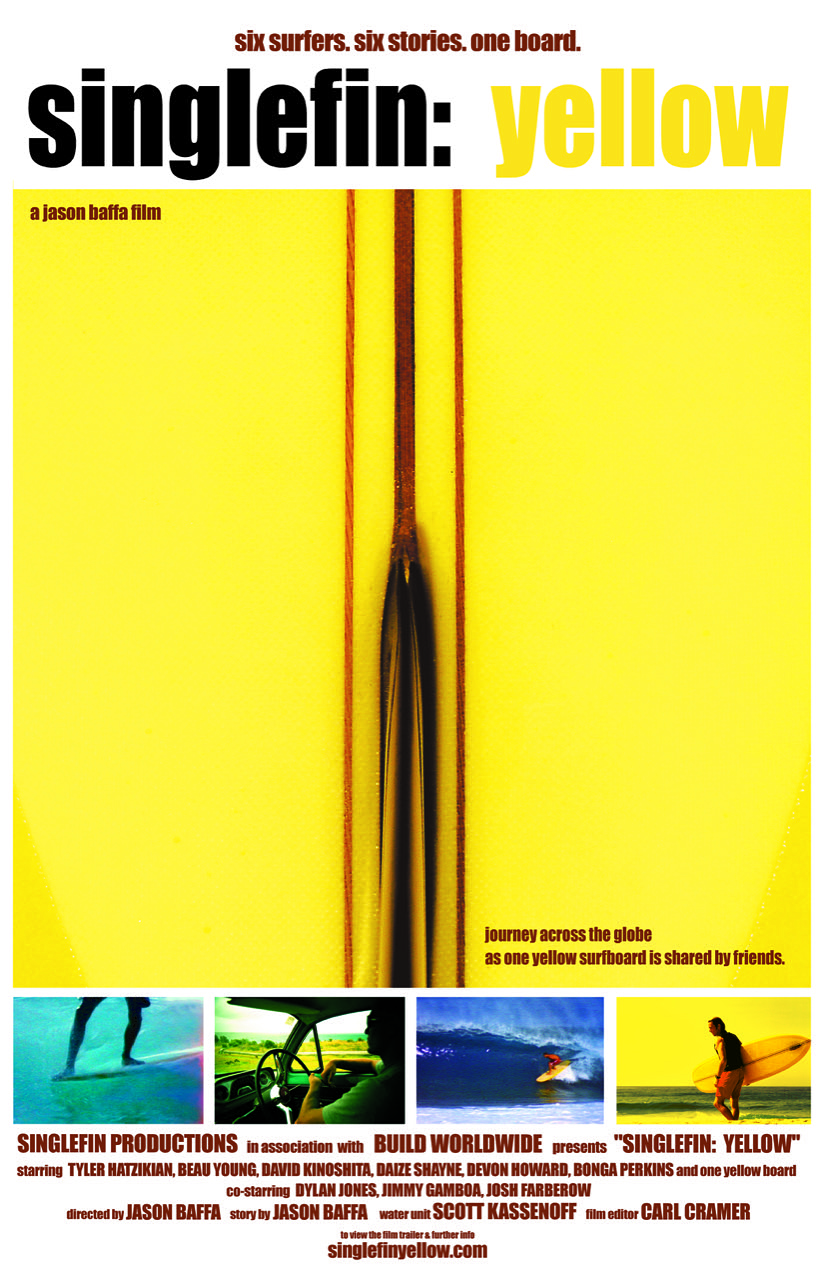
What’s your single greatest memory from making this movie?
That’s tough… Perhaps the premiere at the Lido Theatre in Newport Beach. I was literally editing the end title scroll at Chris Merrit’s home studio a few hours before. We were spitting out the final version and I was getting texts that people were already in a line that ran around the block. I rolled in so hot, Film Master in hand. The theatre was sold out, the lights went down, the film went up, and it was all silent except for the dude next to me chowing down popcorn — every damn bite cracking in my ear, it was awful. I haven’t sat in a seat to watch a premiere since. I remember thinking, “Shit, it’s silent. They hate it.” Then, that last dolly shot of Yellow in the shop, the credits went up, and there was a roar of applause. It was like the weight of the world was lifted off of me. People were so excited. I thought, “Okay. We did it. I think we have something special here.”
The movie ends with a world-weary Yellow on the Used For Sale rack in a surf shop. Who ended up buying it?
Oh, there’ve been rumors… One placed Old Yellow in the French Riviera, hanging out as a pool toy for a group of fashion models, the jet-set using him for a floating cocktail bar. Another had him strapped to an old Land Cruiser hunting pointbreaks in South America. A third spotted him sipping on margaritas in a Mexican restaurant in El Segundo. It’s hard to say, really. All I know is that someday, hopefully sooner rather than later, I’ll have a house with a nice spot for Yellow. And I’ll bring him home.
***
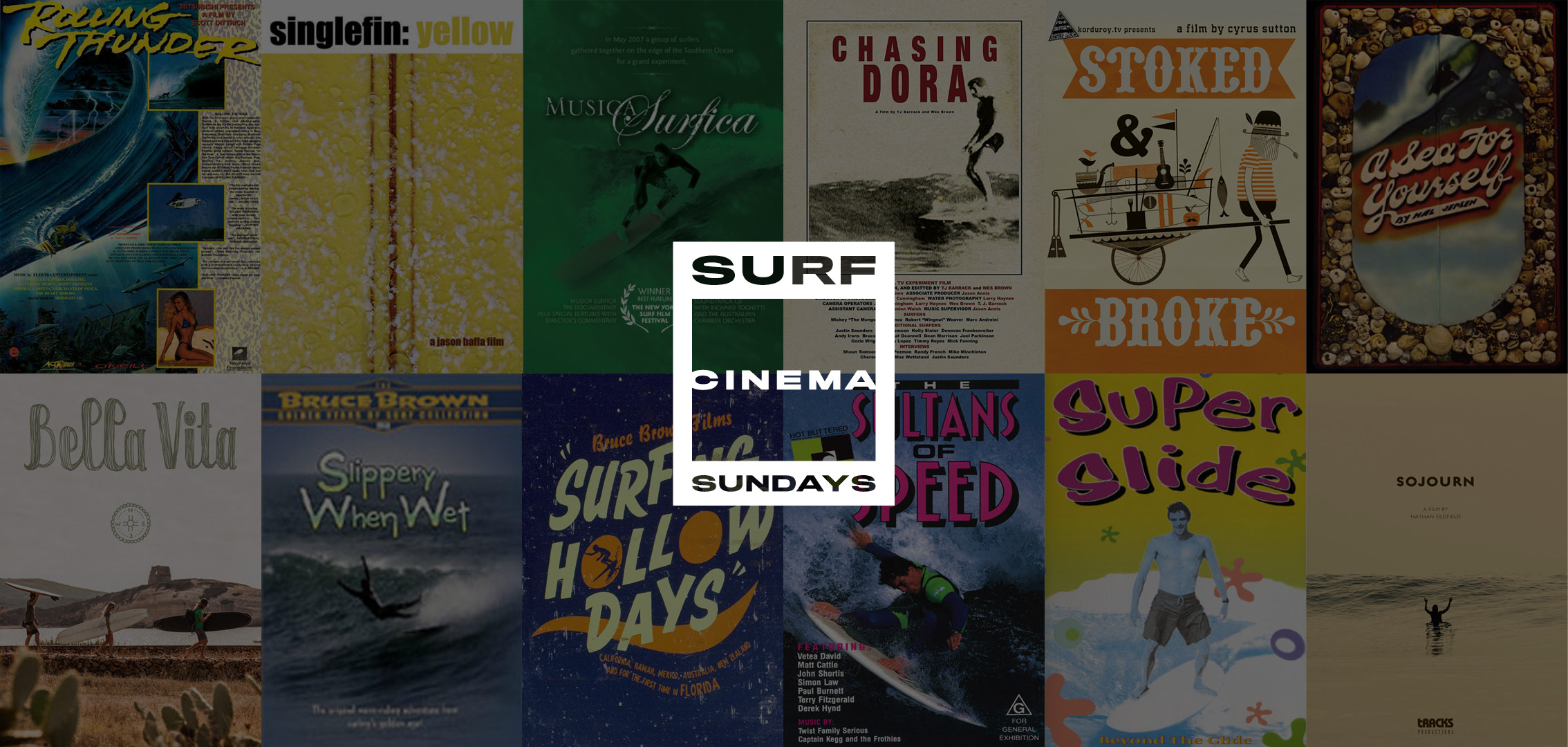
August 16: Singlefin Yellow
August 30: Musica Surfica
September 13: Chasing Dora
September 27: Stoked and Broke
October 11: A Sea For Yourself
October 25: Bella Vita
November 8: Bruce Brown Double Feature: Slippery When Wet/Surfing Hollow Days
November 22: Sultans of Speed
December 6: Super Slide
December 20: Sojourn





Recent Comments